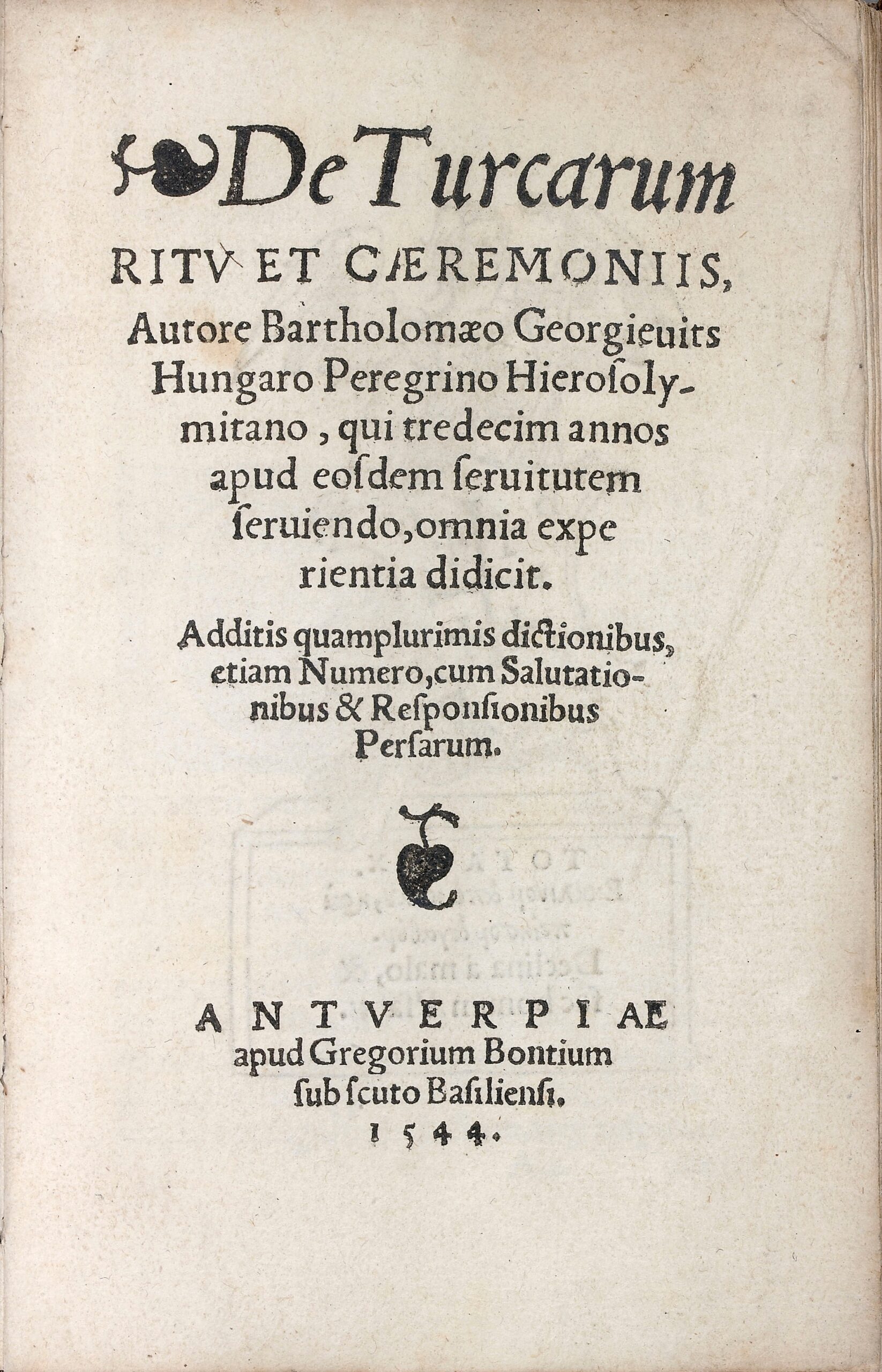Antwerp, apud Gregorium Bontium sub scuto Basiliensi, 1544.
12mo [153 x 95 mm] of (1) bl.l., (20) ll. and (1) bl.l. Large mark of the author wood engraved on the last lêf. Contemporary handwritten note in ink on the last endlêf. Bound in full overlapping vellum, flat spine with handwritten title, remains of lêther ties. Tiny loss at the bottom of the back cover. Contemporary binding.
First edition of this rare opuscule dedicated to the funeral customs of the Turks. Brunet, II, 1541.
« Barthélémy Georgievitz, a Hungarian traveler, born at the beginning of the 16th century, died in Rome, in 1560. Barely out of childhood, he was kidnapped by the Turks who had invaded his country in 1528. Then sold various times as a slave, he was used for the most laborious works. After thirteen yêrs of captivity, he managed to run away. He passed through Asia Minor, and went to find shelter in Palestine from where he was able to go back to Europe and his homeland. We don’t have other details concerning his life, but the controversy he had with a Turk. The latter was provoked in Varazdin, in Hungary, by a dervish who publicly made his wishes clêr to have a conference on religious affairs with Christians. No ecclesiastic daring to enter the lists, Georgiewitch presented himself, alone, opened against the Muslim an animated controversy, of which he came out victorious. » (Biographie générale, 20; 138)
« Among the most important sources of Ottoman history are works written in Europên languages by those who relate their experiences in the Orient. Most of these are by travelers, but perhaps the best informed are the few that are penned by ex-slaves.”
« This first edition of an interesting account of the Turks, after a captivity of thirteen yêrs, was not known to Meuselius. The dedication to Charles V is only found in this first edition.” (Bibliotheca Grenvilliana, 271).
The present trêtise contains an interesting Turkish vocabulary in 9 pages.
« This relation is brief and accurate. A vocabulary of Turkish works explained with Latin precedes a dialogue in the same languages; it is followed by grammatical rules and by names of numbers of the Turkish language. » (Biographie universelle, 164)
It is illustrated on the last page with the large wood engraved author’s mark.
Bêutiful copy preserved in its pure contemporary binding in overlapping vellum.
No copy of this rare first edition has been recorded by ABPC since 1975.
See less information





